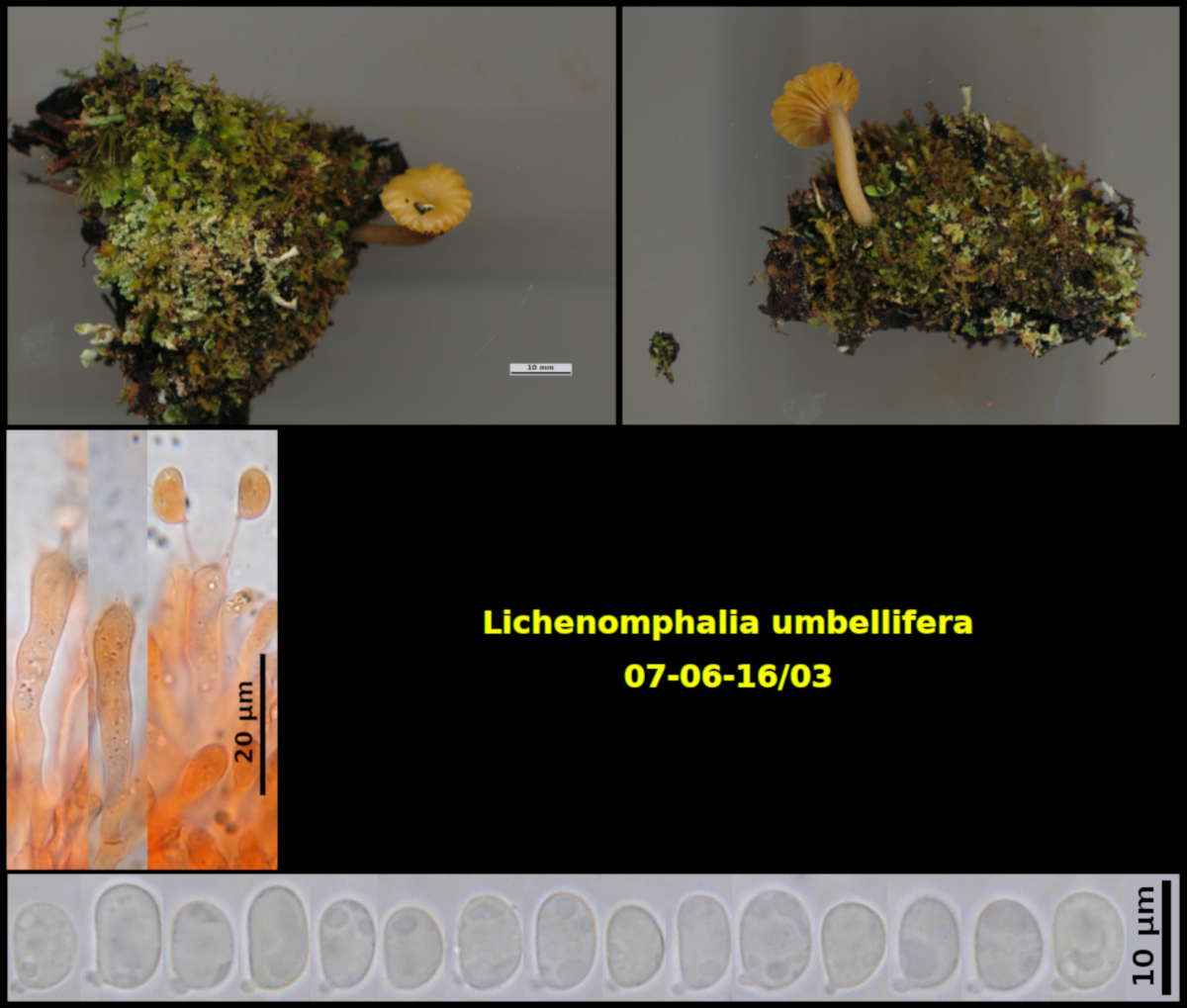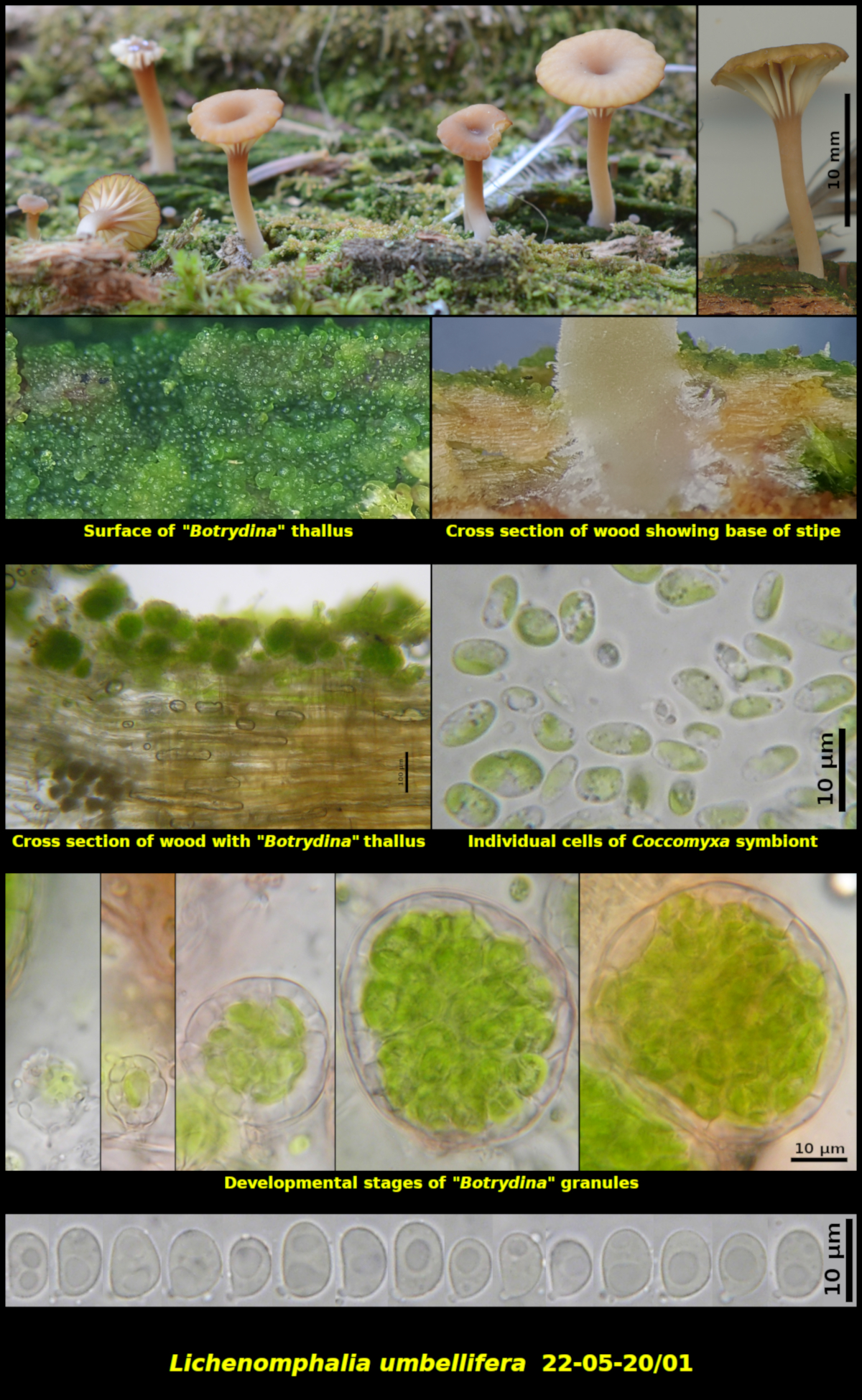Fleshy Fungi of New Brunswick >>
Lichenomphalia umbellifera
Lichenomphalia umbellifera (L.) Redhead, Lutzoni, Moncalvo & Vilgalys


Two collections:
1. Solitary among mosses and lichens on embankment 1-2 meters above high tide line, SE of Letang, Charlotte Co., New Brunswick (07-06-16/03).
Basidiospores white in spore print, rather irregularly obovoid to ellipsoidal, hyaline, smooth, unchanging in Melzer’s Solution, 7.0-9.9 x 4.7-6.3 μm, Q = 1.30-1.78 (average[30]: 8.2 x 5.4 μm, Q = 1.51). Hymenial cystidia lacking. Clamp connections lacking throughout.
2. Gregarious (at least 9) among mosses and algae on a highly decayed log of Abies balsamea in a declining forest, associated with a "Botrydina" thallus, Little Lepreau, New Brunswick (22-05-20/01).
Basidiospores white in spore print, irregular in shape, obovoid to ovoid to subcylindrical, smooth walled, unchanging in Melzer’s Solution, 6.6-9.5 x 4.2-6.4 µm, Q = 1.25-1.90 (average[38]: 8.0±0.71 x 5.4±0.52 µm, Q = 1.49±0.14 - Standard deviation shown to emphasize the variability in spore sizes). Hymenial cystidia lacking. Basidia 2-, 3 and 4-spored, without clamp connections.
Species of the genus Lichenomphalia are unusual among basidiomycota in entering symbiotic relationships with green algae to form lichens. Lichenomphalia umbellifera forms small spherical granules containing species of the algal genus Coccomyxa wherby it can obtain the carbon it needs, thus freeing it from having to obtain this essential nutrient among competing fungi. The rejected name Botrydina was formerly applied to the resulting lichen but is now used only informally to describe the type of thallus composed of a sheet of the spherical granules. Thus in the illustrations above, the name "Botrydina" is used to refer to the granules formed by L. umbellifera, and Coccomyxa as the proper name for the alga enclosed by the fungus inside the granules. Redhead and Kuyper (Arctic and Alpine Mycology II, Env. Sci. Res. 34, 1987, pages 319-348. ) discussed and illustrated the relationships between the fungus and the alga in some detail.
Our collections of L. umbellifera produce basidiospores with variable shapes and sizes. This may be due to the variablity of the basidia, which may have as few as two or as many as four sterigmata.
Lichenomphalia umbellifera is thought to be a member of the family Hygrophoraceae. Typical of this family, it has broad basidiospores with a prominent apiculus and long narrow basidia.
Photograph: D. Malloch (07-06-16/03, 22-05-20/01).